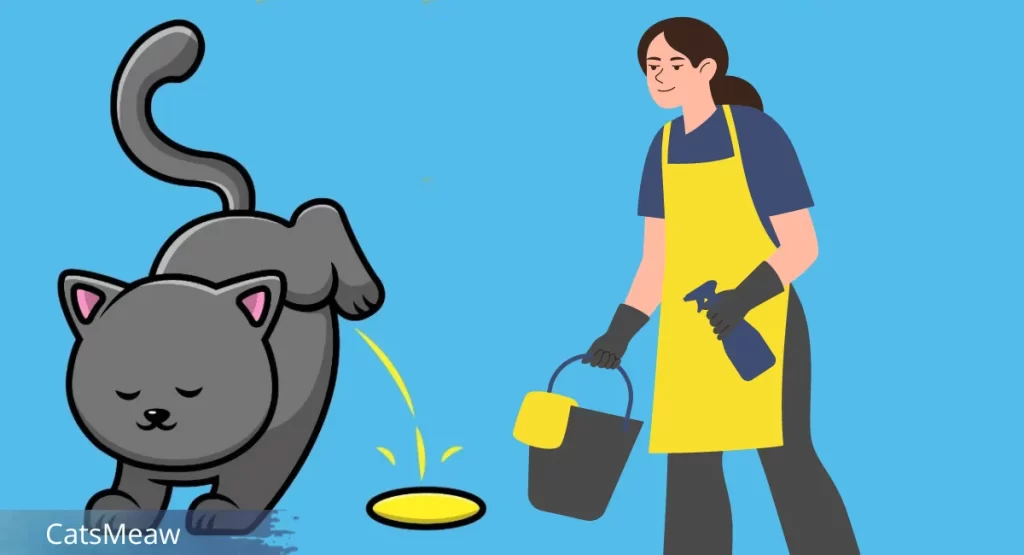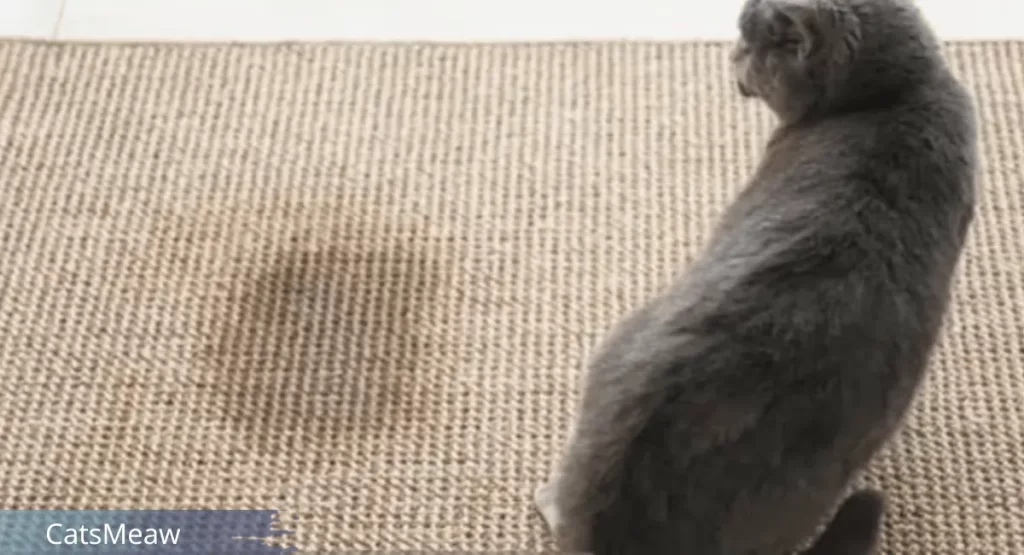Let’s face it: dealing with cat urine can be one of the most frustrating challenges for any cat owner. Whether your furry friend has had a little accident or is marking their territory, the smell can linger long after the incident.

So, how do you effectively remove cat urine and reclaim your space? Quick action is essential to prevent stains and odors from setting in, and that’s exactly what we’re going to explore in this guide!
Table of Contents
Understanding Cat Urine
Composition and Odor
First off, it’s helpful to understand what you’re dealing with. Cat urine contains uric acid, which is what makes it such a stubborn smell. This acidic compound can bond with surfaces, making it tough to eliminate completely. If you’ve ever tried to cover up the smell with air fresheners, you know it doesn’t work. Instead, you will need a targeted approach in order to truly remove cat urine.
Why Cats Urinate Outside the Litter Box
Before we jump into solutions, let’s consider why your cat might be urinating outside the litter box. Stress, medical issues, or simply a dislike for the litter can lead to these accidents. Addressing the root cause can help prevent future incidents, but for now, let’s focus on cleaning up!
Essential Tools and Ingredients for Removal
To effectively remove cat urine, you’ll need a few essential tools and ingredients.
Cleaning Supplies
You don’t need a plethora of fancy products. Here’s what you’ll need:
- A clean cloth for blotting or paper towels.
- A spray bottle for your cleaning solution.
- A vacuum cleaner (preferably one with a wet/dry capability).
- An enzyme cleaner designed specifically for cats stains.
Natural Remedies vs. Commercial Products
Natural remedies may be just as effective as commercial products. Some people swear by vinegar and baking soda, while others prefer enzymatic cleaners. The choice is yours! Just remember to avoid ammonia-based products, as they can make matters worse by mimicking the smell of cat urine.
Step-by-Step Guide to Remove Cat Urine
Now, let’s get into the nitty-gritty of how to remove cat urine step by step.
1. Blotting the Urine
The first step is to act quickly. Grab your paper towels or clean cloth and blot the area where your cat has urinated. Don’t rub! Blotting helps absorb as much liquid as possible without pushing it further into the fabric or surface. If the area is large, consider using a wet/dry vacuum to suck up the excess moisture.
2. Preparing a Cleaning Solution
Next, you’ll want to prepare your cleaning solution. A simple mix of equal parts white vinegar and water works wonders. Vinegar neutralizes the odor, while water dilutes the urine. If you are using an enzyme cleaner for cats, follow the instructions on the label to mix it properly.

3. Applying the Solution
Spray your cleaning solution generously on the stained area. Let it sit for about 15 minutes to allow the solution to penetrate and break down the uric acid. If you’re using a commercial enzyme cleaner, it may need more time, so check the label for specific instructions.
4. Rinsing and Drying
After letting the cleaner sit, blot the area again with a clean cloth to absorb the solution. Rinse the area with clean water and blot until the surface is damp but not soaking wet. Finally, let it air dry completely. You can accelerate the drying process by using a fan or by opening windows.
Dealing with Stains and Odors
Even after following these steps, you might still notice stains or odors lingering.
Advanced Techniques for Stubborn Spots
For persistent stains, consider making a paste of baking soda and water. Apply it to the area and let it sit until dry. Once dried, vacuum up the residue. This will help absorb all remaining odors.
Related: Cat’s Litter Box: Best Place Put It in the House?
Tips for Preventing Future Incidents
To prevent future accidents, keep your cat’s litter box clean and accessible. Sometimes, a simple change in litter type or location can make a world of difference. Pay attention to any behavioral changes in your cat, as they might signal stress or health issues that need addressing.
When to Seek Professional Help
Sometimes, despite your best efforts, the smell simply won’t budge.
Indicators That You Need a Pro
If the odor persists or if your cat frequently urinates outside the litter box, it might be time to call in the professionals. Signs that you need help include:
- Lingering odor even after multiple cleanings.
- Stains that have set in over time.
- Persistent behavioral changes in your cat.
Benefits of Professional Cleaning Services
Professional cleaning services have specialized techniques and products that can penetrate deep into carpets, upholstery, and other surfaces. They can help eliminate odors and stains that you may not be able to tackle on your own.
Conclusion
Removing cat urine doesn’t have to be a daunting task. With the right tools, techniques, and a bit of elbow grease, you can effectively remove cat urine and keep your home smelling fresh. Remember, quick action is crucial, so don’t wait too long after an accident. By understanding your cat’s needs and taking preventive measures, you can create a harmonious environment for both you and your furry friend.
FAQs
1. What is the best way to remove cat urine from carpet?
The best way to remove cat urine from carpet is to blot the area, then apply a mixture of vinegar and water or an enzyme cleaner, let it sit, rinse, and dry.
2. Why does my cat keep urinating outside the litter box?
Cats may urinate outside the litter box due to stress, medical issues, or a dislike for their litter. It’s important to investigate the root cause.
3. Can I use bleach to clean cat urine?
No, bleach is not recommended as it can create harmful fumes and may not effectively eliminate the odor.
4. How can I prevent my cat from urinating in the same spot?
To prevent repeat incidents, clean the area thoroughly and consider using deterrents or changing your cat’s litter box setup.
5. Is it safe to use hydrogen peroxide on cat urine stains?
Hydrogen peroxide can be effective, but it should be tested on a small area first as it can bleach some fabrics. Always follow up with thorough rinsing.
